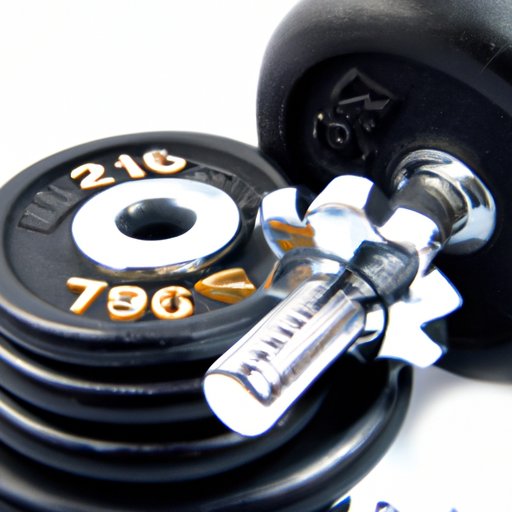
I. Introduction
Weight lifting is often associated with building muscle and gaining a toned physique. However, many people wonder if it actually burns calories. This article will examine the science behind weight lifting and calorie burn, providing insights and tips on how to maximize its effectiveness. By the end of this guide, readers will have the knowledge and tools to incorporate weight lifting into their fitness routine and achieve their calorie-burning goals.
II. The Science Behind Weight Lifting: Understanding its Calorie-Burning Effectiveness
Weight lifting has been shown to increase metabolic rate and calorie consumption for several hours after a workout. This is due to the fact that weight lifting causes microtrauma to the muscles, which prompts the body to expend energy to repair and rebuild them. This process is called excess post-exercise oxygen consumption (EPOC), also known as the afterburn effect.
In addition to EPOC, the process of building muscle also contributes to calorie burn. Muscle tissue expends more energy than fat tissue, even at rest. As a result, having more muscle mass can increase overall calorie burn and metabolic rate.
III. Get the Lift on Your Calorie Burn: How to Maximize the Effectiveness of Weight Lifting
Proper technique is essential to maximizing the effectiveness of weight lifting. This includes maintaining good form, controlling the motion of the weights, and lifting an appropriate amount of weight for each exercise.
Frequency and intensity are also key factors in effective weight lifting. It is important to give muscles sufficient time to recover between workouts while still challenging them enough to promote growth. The frequency and intensity of weight lifting can vary depending on individual fitness goals and experience level.
Finally, adding variations to weight lifting routines can keep workouts interesting and prevent plateauing. Examples of variations include changing the number of sets and reps, using different equipment or weight amounts, and incorporating different exercises.
IV. Breaking the Myth: Why Weight Lifting Isn’t Just for Building Muscle but Also for Losing Weight
Weight lifting is often associated with building muscle mass, but it is also an effective way to lose weight. In addition to the calorie burn achieved during a workout, weight lifting has metabolic effects that promote weight loss.
For example, weight lifting can increase insulin sensitivity, which helps the body break down glucose more efficiently. It can also promote the release of human growth hormone, which has been linked to fat loss.
V. From Dumbbells to Cardio: How Weight Lifting Can Benefit Your Calorie-Burning Routine
Incorporating weight lifting into a regular exercise routine can complement cardio or other physical activities to burn more calories. Weight lifting can help increase muscular endurance, which can improve performance during cardio workouts. It can also help prevent muscle loss that can occur during prolonged periods of caloric deficit.
An example of how to incorporate weight lifting into a daily routine is by alternating between weight lifting and cardio days. This allows for adequate rest between weight lifting sessions while still providing opportunities for calorie burn through cardio workouts.
VI. Taking it to the Next Level: Weight Lifting as a Fat-Burning and Muscle-Toning Workout
Weight lifting can be a highly effective way to achieve both fat loss and muscle toning goals. Creating a workout plan that combines weight lifting with cardio or other activities can help maximize results.
Examples of effective workouts include high-intensity interval training (HIIT) that combines weight lifting and cardio exercises, or circuit training that incorporates both strength and cardiovascular exercises.
VII. The Weight Lifter’s Diet: The Role of Nutrition in Maximizing Calorie Burn Through Weight Lifting
Proper nutrition is essential to support the body’s metabolic needs during weight lifting. This includes consuming adequate amounts of protein to support muscle growth and repair, as well as carbohydrates and healthy fats to provide energy for workouts.
Examples of foods that can support the body’s needs during weight lifting include lean proteins like chicken and fish, complex carbohydrates like brown rice and sweet potatoes, and healthy fats like avocado and nuts.
VIII. Conclusion
Weight lifting can be an effective way to burn calories, build muscle, and achieve fitness goals. By incorporating weight lifting into a comprehensive exercise and nutrition plan, individuals can maximize their calorie burn and achieve sustainable results.
Whether you are new to weight lifting or a seasoned pro, this guide provides insights and tips that can help take your fitness routine to the next level.




